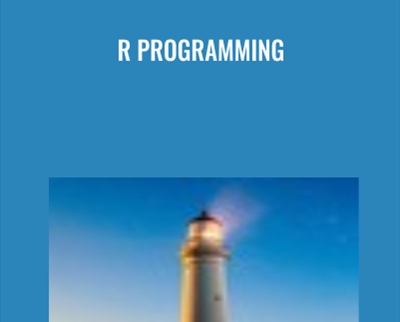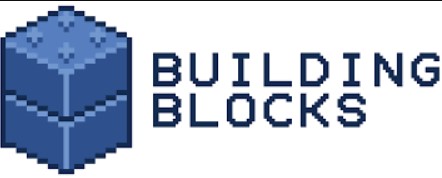R Programming – Roger D. Peng, PhD
Original price was: $99.00.$21.00Current price is: $21.00.
R Programming – Roger D. Peng, PhD Download. Data science is a huge field, and theres no way you can master it by going through a single course. The goal …
Salepage link: At HERE. Archive:
What you’ll learn
- You will learn the most important tools in R that will allow you to do data science
- You will learn to install R studio
- You will have the tools to tackle a wide variety of data science challenges, using the best parts of R.
- You will learn to import your data into R
- You will learn how to Tidy the data. Tidying your data means storing it in a consistent form that matches the semantics of the dataset with the way it is stored.
- You will learn Visualisation, it is a fundamentally human activity. A good visualisation will show you things that you did not expect, or raise new questions about the data
- You will learn Models, they are complementary tools to visualisation. Once you have made your questions sufficiently precise, you can use a model to answer them. Models are a fundamentally mathematical or computational tool, so they generally scale well.
Requirements
-
You should be generally numerically literate, and it’s helpful if you have some programming experience already.
Description
Data science is an exciting discipline that allows you to turn raw data into understanding, insight, and knowledge. The goal of “R for Data Science” is to help you learn the most important tools in R that will allow you to do data science. After going through this course, you’ll have the tools to tackle a wide variety of data science challenges, using the best parts of R.
What you will learn
Data science is a huge field, and there’s no way you can master it by going through a single course. The goal of this course is to give you a solid foundation in the most important tools
First, you must import your data into R. This typically means that you take data stored in a file, database, or web API, and load it into a data frame in R. If you can’t get your data into R, you can’t do data science on it!
Once you’ve imported your data, it is a good idea to tidy it. Tidying your data means storing it in a consistent form that matches the semantics of the dataset with the way it is stored. In brief, when your data is tidy, each column is a variable, and each row is an observation. Tidy data is important because the consistent structure lets you focus your struggle on questions about the data, not fighting to get the data into the right form for different functions.
Once you have tidy data, a common first step is to transform it. Transformation includes narrowing in on observations of interest (like all people in one city, or all data from the last year), creating new variables that are functions of existing variables (like computing speed from distance and time), and calculating a set of summary statistics (like counts or means). Together, tidying and transforming are called wrangling, because getting your data in a form that’s natural to work with often feels like a fight!
Once you have tidy data with the variables you need, there are two main engines of knowledge generation: visualization and modelling. These have complementary strengths and weaknesses so any real analysis will iterate between them many times.
Prerequisites:
You should be generally numerically literate, and it’s helpful if you have some programming experience already.
Who this course is for:
- Beginner R programmers curious about data science
Course content
13 sections • 14 lectures • 8h 34m total length
- Introduction
- R Programming Part 2: Datatypes>Factor
- R Programming Part 3: Converting Factor Datatypes
- R Programming Part 4: Factor to Numeric, Logical to Numeric Datatypes
- R Programming Part 5: Character to Logical/Numeric/Factor
- R Programming Part 6: Create, Name, Modify & Arithmetic operations of Vectors
- R Programming Part 7: Functions >Which, Rep, Seq and dealing with missing values
- R Programming Part 8: Matrix creation. Accessing Matrix elements 8d Modification
- R Programming Part 9: Creating a Dataframe, cbind, rbind, stack & unstack data
- R Programming Part 10: Sub-setting the data using With and Subset functions
- R Programming Part 11: Create simple function with and without passing arguments
- R Programming Part 12: Packages scatterplotSd and rgl
- Data files
Here's an overview of the prominent keywords and a list of famous authors:
Business and Sales: Explore business strategies, sales skills, entrepreneurship, and brand-building from authors like Joe Wicks, Jillian Michaels, and Tony Horton.
Sports and Fitness: Enhance athleticism, improve health and fitness with guidance from experts like Shaun T, Kayla Itsines, and Yoga with Adriene.
Personal Development: Develop communication skills, time management, creative thinking, and enhance self-awareness from authors like Gretchen Rubin, Simon Sinek, and Marie Kondo.
Technology and Coding: Learn about artificial intelligence, data analytics, programming, and blockchain technology from thought leaders like Neil deGrasse Tyson, Amy Cuddy, and Malcolm Gladwell.
Lifestyle and Wellness: Discover courses on holistic health, yoga, and healthy living from authors like Elizabeth Gilbert, Bill Nye, and Tracy Anderson.
Art and Creativity: Explore the world of art, creativity, and painting with guidance from renowned artists like Bob Ross and others.
All the courses on WSOlib are led by top authors and experts in their respective fields. Rest assured that the knowledge and skills you acquire are reliable and highly applicable.
Specification: R Programming – Roger D. Peng, PhD
|
User Reviews
Only logged in customers who have purchased this product may leave a review.

Original price was: $99.00.$21.00Current price is: $21.00.












There are no reviews yet.